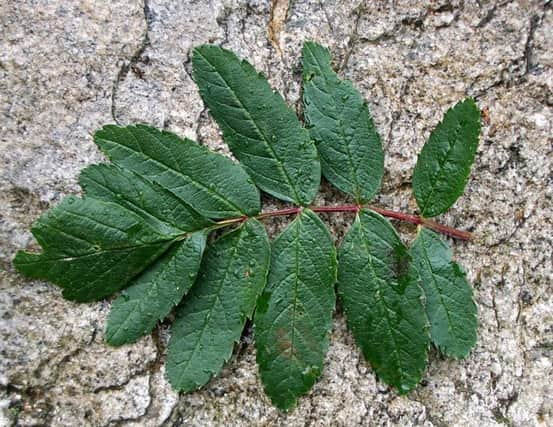Scotland's flora: Arran whitebeam tree


It was the Catacol whitebeam (Sorbus pseudomeinichii), named after the Glen in which it was found. They only found two specimens, but quickly the Royal Botanic Gardens in Edinburgh sent a team to collect seeds and cuttings, in order to protect these unique trees from extinction.
The Catacol whitebeam is the result of a cross between rowan and whitebeam trees, and research into the genetics of whitebeams has shown that the population on is much more diverse than previously suspected. Also, researchers claim that the whitebeams on Arran are gradually evolving into a new type of tree which they predict will look very similar to the rowan. Whitebeams can be recognised by their white-backed leaves, white blossom in spring and red or orange berries in autumn
Advertisement
Hide AdTwo whitebeam species which are unique to Arran were already known, prior to the discovery of the Catacol whitebeam. The Sorbus arranensis and Sorbus pseudofennica species are found in Abhainn Bheag, and developed from a cross between the teraploid rock whitebeam (Sorbus rupicola) and the rowan (Sorbus aucuparia), indicating a complex genetic heritage. They are usually found on mountain slopes, but can be grown at lower altitudes, as in Brodick Country Park.
However, all the Arran whitebeam species are severely threatened by extinction, due to intensive sheep grazing, a decline in their woodland habitat, and the island’s harsh weather conditions. Also, these trees reproduce asexually, reducing genetic variation and making them more vulnerable to changes in their environment and disease. The species can reproduce this way because they produce viable seed without the need for pollination and fertilisation.
S. arranensis and S. pseudofennica were first described in 1897, but were not recognised as separate types of whitebeam until 1952. In 1956 a National Nature Reserve was founded at the site of the largest known population of the two species, in the north of Arran, to help them survive in the harsh landscape. Surveys in 2004 reported that the total population sizes of S. arranensis and S. pseudofennica were 407 and 436 respectively. The oldest preserved specimen is from the S. pseudofennica, collected in 1797 from North Arran.